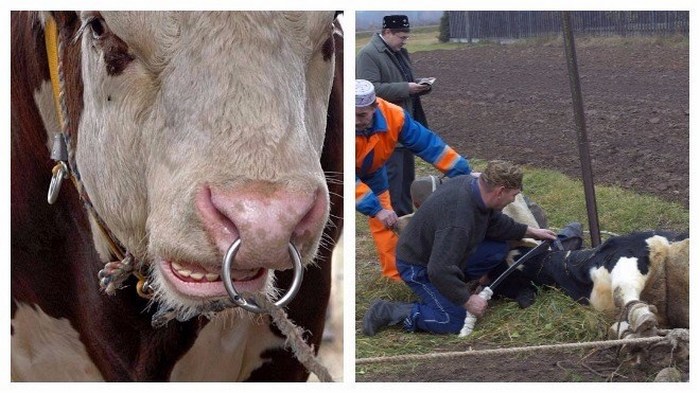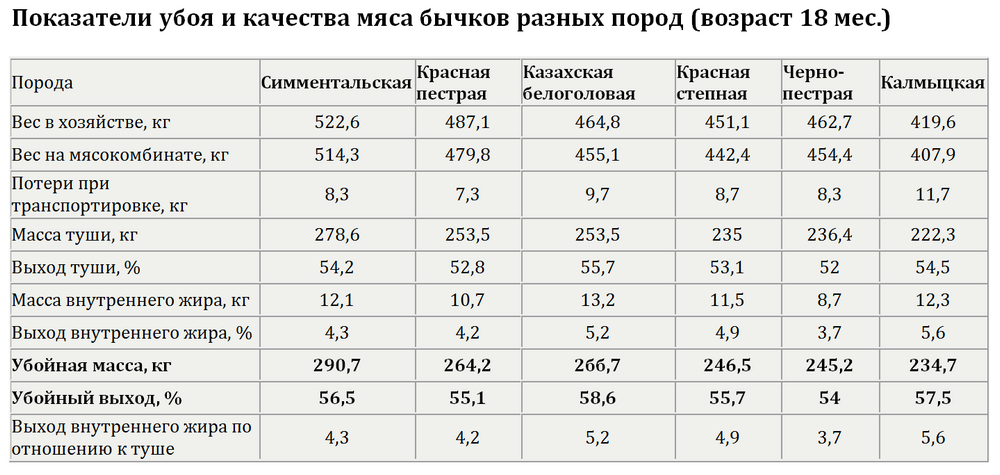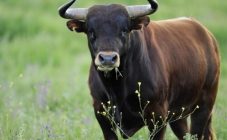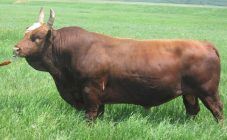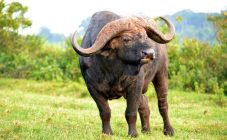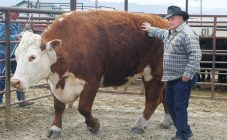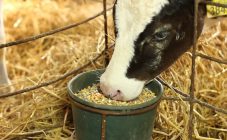Content:
The domestic fauna in the villages and villages is quite diverse. A modern village or village cannot be imagined without cattle, which include bulls and cows. Slaughter of large domestic animals is a serious and responsible business. Therefore, if there is no experience in carrying out this operation, then it is best to invite a specialist or hand over the cow to the slaughterhouse. If a novice farmer does not have such an opportunity, then in this case you need to first study this issue using the Internet, literature, or take advice from experienced farmers on how to slaughter bulls.
Preparation of cattle for slaughter
Pets must be prepared before slaughter, otherwise the meat may lose quality or weight.
It is recommended to choose cattle for slaughter, at least a year old, since it is during the first year of life that the calf is actively growing. After a year of life with the same feeding, weight gain decreases.
The best time for slaughter is autumn. This is due to the fact that cattle have a lot of cheap plant food in summer and, thanks to this, they quickly gain weight.
It is recommended to carry out the procedure in the morning when the temperature outside is low.
Veterinary examination
Before killing a bull or a cow, it is necessary to conduct a veterinary examination of the animal with the receipt of the relevant documents. Also, the temperature of cattle must be measured.
It is imperative to fulfill this condition, since this procedure is designed to prevent infection of people when they eat the meat of a sick animal.
It is forbidden to slaughter a bull or slaughter a cow if they have the following diseases or their symptoms:
- anthrax;
- rabies;
- emphysematous carbuncle;
- catarrhal fever;
- tetanus;
- plague;
- malignant edema.
If the animals were vaccinated against anthrax, rabies or foot and mouth disease before slaughter, slaughter is postponed for an appropriate period, which depends on the type of medicine used.
If, nevertheless, it is found that the animal is sick, then before slaughtering such a bull, he is treated. If treatment is not possible, then it is still cut, but the corpse is disposed of.
How are sick cows cut correctly? So that the disease does not spread, and the meat from the sick animal does not go on sale, one important rule must be followed, which is that a farm is not a place for slaughtering sick animals. Slaughtering them at home is prohibited. It is carried out only at special sanitary cattle slaughterhouses under the direct supervision of specialists.
It is not recommended to slaughter cattle that are less than 2 weeks old. Such meat will be unripe and tasteless.
Diet
Cattle destined for slaughter stop receiving feed in 12-24 hours. This is necessary so that the intestines are emptied as much as possible, which will subsequently facilitate the handling of the killed animal. However, water is not limited during this period.
Cattle slaughter technology
Consider how cows are killed and how to properly slaughter.
The animal to be slaughtered cannot be frightened. Since a cow or a bull is quite strong animals, therefore, by resisting, they can greatly complicate the procedure, while presenting a serious danger to the farmer. It is also important that the bull does not feel pain at the moment of death.
Previously, before the bulls are slaughtered, the instrument must be prepared. For slaughter you will need:
- sledgehammer;
- rope;
- knife;
- container for blood;
- rags.
How bulls or cows are slaughtered
In order to kill an animal, you must adhere to the following procedure:
- Beginner operation. In the morning, the animal is taken out of the room, as for grazing, and taken to the place of slaughter. There he is immobilized as much as possible. To do this, they fix the head to a reliable support with a rope tied to the horns.
- Next, the cow needs stun or overwhelm. The sledgehammer must be hit hard in the frontal part. The second option is to hit with a dagger into the depression between the occipital bone and the cervical vertebra. However, the second method is not recommended for beginners. It is important to correctly calculate the force of the blow, since if it is not strong enough, then the animal, defending itself, can cripple the slaughterer. If it is very strong and fatal, then the meat will be of lower quality.
- After the animal is stunned, it is necessary cut open large blood vessels with a knifewhich are located on the neck. This procedure is carried out quickly, since after a few minutes the stunned bull can wake up.
- When the blood stops flowing, they begin to butcher the killed bull. To speed up the drainage of blood, it is suspended by its hind legs.
Instead of stunning and then slaughtering the bull at home, they can kill the animal immediately using a firearm, for example, a gun.
If the industrial slaughter of cattle is carried out in large volumes, the slaughterhouse is equipped with special, close-for-cow corrals with mobile platforms. In this case, slaughter is carried out using a pistol designed for slaughtering cattle.
It takes about 3 hours for experienced specialists to cut carcasses. For a beginner, this period will be long.
Cattle slaughter pistol
A special pistol can be used to stun cows. Two types of devices are used: with and without a penetrating rod into the skull. The second method is safer, since it does not come into contact with the blood of the animal, and at present this type of device is the most popular instrument used in European countries.
- The principle of the mechanism first type lies in the fact that the impact rod, penetrating into the animal's brain, destroys it. At the same time, the bull is stunned and does not feel pain. The rod is driven by compressed gas. Depending on the source of compressed gas, pistols are divided into powder and pneumatic devices.
- Operating principle second type the device is based on the fact that compressed gas is struck in the upper third of the frontal bone of the animal. With such stunning, there is no hemorrhage in the goby brain.
Meat yield at slaughter of cattle
To estimate the amount of meat that is obtained after the slaughter of an animal, such a concept as the slaughter weight of the animal is used. This figure includes the weight of the carcass without taking into account the weight of the severed head, lower limbs and removed skin and internal organs.
The second indicator is the lethal yield. The slaughter yield is calculated as the ratio of the slaughter weight to the live weight of the animal (the weight of the animal before slaughter). This ratio is measured as a percentage.
Depending on the breed (meat or dairy), the meat yield also depends. In meat breeds, it will be much more than in dairy breeds. At the same time, the quality of meat in meat breeds is also much higher.
If the animal is reared on pasture, the slaughter yield is approximately 55%. If a well-fed bull is slaughtered, then the slaughter yield is higher here, it can reach 60-65%. When a calf is slaughtered at the age of 4-5 months, the yield is much less, since it does not have time to gain muscle strength by this age, and its adipose tissue is poorly developed.
How to butcher a cow
Butchering the carcass of a bull can only be done after all the blood has been drained from the animal. This usually takes 10 minutes.
Skinning procedure:
- Ears are cut off.
- With a sharp knife, circular incisions are made around the area of the nose, mouth and horns.
- An incision is made from the mouth to the neck (center) and the skin is removed from the head.
- Cut off the head. For this, an incision is made between the head and the cervical vertebra.
- The carcass is placed on its back and fixed.
- An incision is made in the middle of the neck towards the anus through the abdomen.
- Around the anus and joints, cuts are made in a circle, and the skin along the legs to the abdomen is also cut.
- The hooves are removed from the hind legs along the hock joints, and from the front legs along the wrists.
- They begin to remove the skin from the legs, then continue from the neck and sides. After that, it is removed in the chest area, on the back, abdomen and the removal is completed at the back of the mascara.
The procedure for cutting an animal:
- The chest is cut with an ax.
- Then you need to bandage the trachea and remove it along with the stomach.
- Internal organs are removed through a thoracic incision.
- With the help of a saw, they divide the carcass into two parts, then either they cut the cow into parts, or send it to the freezer and cut it later.
Slaughter mini workshop for cattle
After the cattle has grown to the age of slaughter, you can hand over the animal to the meat processing plant. However, it is much more profitable to use your own mini-slaughterhouses. They are modular. Modular mobile workshops are equipped with all the necessary equipment.
It includes the following modules:
- for slaughter;
- for the primary processing of carcasses.
Can be completed with a module for the production of semi-finished products. For example, in such modules you can stew meat and produce stew.
Growing cattle is quite a profitable business. Therefore, having received the skills of slaughtering animals, you can get quality meat, both for your own consumption and for sale.
